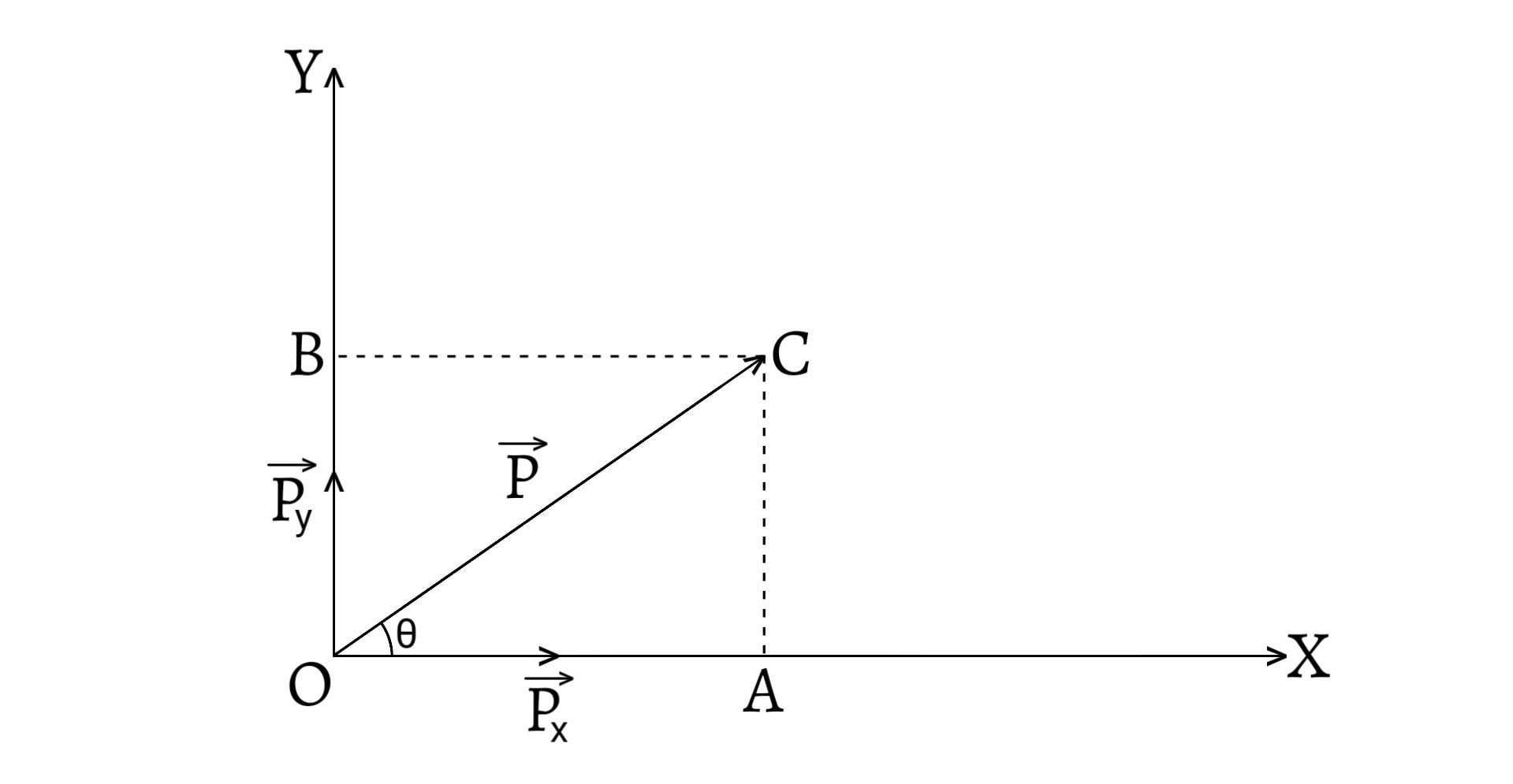A system of vectors is said to be coplanar vectors if a plane can be drawn parallel to all of them. Otherwise, they are said to be non coplanar.
In case of two dimensional vectors say $\overrightarrow{a}$ and $\overrightarrow{b}$, it is always possible to draw a plane parallel to both. Hence, the two vectors are always coplanar.
Three Dimensional Vectors or Space Vectors
Consider three non zero and non coplanar vectors $\overrightarrow{a}$, $\overrightarrow{b}$ and $\overrightarrow{c}$. If $x$, $y$ and $z$ be three scalars such that \[x\:\overrightarrow{a}+y\:\overrightarrow{b}+z\:\overrightarrow{c}=0\] then, $x=0$, $y=0$ and $z=0$.
Decomposition of a Space Vector
If $\overrightarrow{a}$, $\overrightarrow{b}$ and $\overrightarrow{c}$ be three non coplanar vectors, then any vector $\overrightarrow{r}$ in the space can uniquely be expressed as the sum of the three vectors parallel to $\overrightarrow{a}$, $\overrightarrow{b}$ and $\overrightarrow{c}$. \[\text{i.e.}\;\; \overrightarrow{r}=x\:\overrightarrow{a}+y\:\overrightarrow{b}+z\:\overrightarrow{c}\] where, $x$, $y$ and $z$ are scalars.
Let $\overrightarrow{OA}=\overrightarrow{a}$, $\overrightarrow{OB}=\overrightarrow{b}$ and $\overrightarrow{OC}=\overrightarrow{c}$ be three space vectors. Since the three lines $OA$, $OB$ and $OC$ are non coplanar, so the three lines $OA$, $OB$ and $OC$ taken in pairs determine three planes $BOC$, $COA$ and $AOB$. Again, let $\overrightarrow{OP}=\overrightarrow{r}$ be a vector in the space.

Now, through $P$, draw planes parallel to the planes $BOC$, $COA$ and $AOB$ cutting $OA$, $OB$ and $OC$ in $A’$, $B’$ and $C’$ respectively. Thus, we obtain a parallelepiped with $OP$ as its diagonal.
Since $\overrightarrow{OA’}$ and $\overrightarrow{OA}$ are collinear, so, \[\overrightarrow{OA’}=x\:\overrightarrow{OA}=x\:\overrightarrow{a}\] Similarly, \[\overrightarrow{OB’}=y\:\overrightarrow{b}\;\;\text{and}\;\;\overrightarrow{OC’}=z\:\overrightarrow{c}\] where, $x$, $y$ and $z$ are scalars.
Now, applying parallelogram law of vector addition in the parallelogram $OA’MB’$, \[\overrightarrow{OM}= \overrightarrow{OA’}+\overrightarrow{OB’}\] \[\overrightarrow{OM}=x\:\overrightarrow{a}+y\: \overrightarrow{b}\]
Again, from the parallelogram $OMPC’$, \[\overrightarrow{OP}=\overrightarrow{OM}+\overrightarrow{OC’} =x\:\overrightarrow{a} +y\:\overrightarrow{b}+z\:\overrightarrow{c}\] \[\therefore\overrightarrow{r} =x\:\overrightarrow{a}+y\:\overrightarrow{b}+z\:\overrightarrow{c}\;\text{ __(1)}\]
Now, we shall show that this relation is unique. For this, if possible, let \[\overrightarrow{r} =x’\:\overrightarrow{a}+y’\:\overrightarrow{b}+z’\:\overrightarrow{c}\;\text{ __(2)}\] where $x’$, $y’$ and $z’$ are scalars different from $x$, $y$ and $z$ respectively.
From $\text{(1)}$ and $\text{(2)}$, \[x\:\overrightarrow{a}+y\:\overrightarrow{b}+z\:\overrightarrow{c}= x’\:\overrightarrow{a}+y’\:\overrightarrow{b}+z’\:\overrightarrow{c}\] \[(x-x’)\:\overrightarrow{a}+(y-y’)\:\overrightarrow{b}+(z-z’)\:\overrightarrow{c}=0\]
Since $\overrightarrow{a}$, $\overrightarrow{b}$ and $\overrightarrow{c}$ are non zero and non coplanar, \[\begin{array}{c}\therefore x-x’=0 & \therefore x=x’ \\ \therefore y-y’=0 & \therefore y=y’ \\ \therefore z-z’=0 & \therefore z=z’ \end{array}\] Hence, the relation is unique.
Previous: Collinear Vectors




